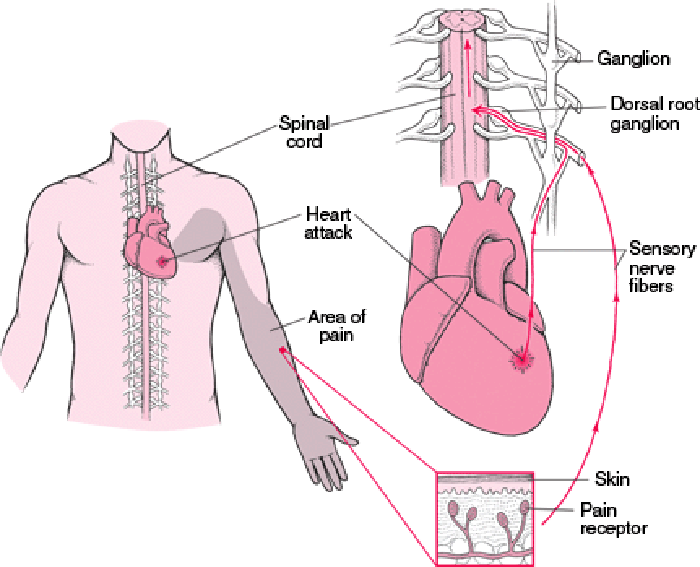Positive Patient Outcome After Spinal Manipulation in a Case of Cervical Angina
SOURCE: Man Ther. 2009 (Dec); 14 (6): 702–705
Steven R. Passmore, Andrew S. Dunn
Veterans Affairs of Western New York Health Care System,
Buffalo, New York, USA.
Introduction
When angina pectoris is suspected but adequately ruled out, upper anterior chest pain and related symptoms may be attributed to cervical angina, particularly in the presence of radiculopathy and myelopathy (Nakajima et al., 2006). Cervical angina is theorized to involve the C6, C7, or T1 nerve roots, and possibly the medial and lateral pectoral nerves (Jacobs, 1990; Freccero and Donovan, 2005). While the prevalence of cervical angina is not completely clear, it is described as a virtually unknown and neglected clinical syndrome that may not be uncommon but is under diagnosed (Nakajima et al., 2006; Christensen et al., 2005). Aside from cardiac enzyme and exercise tolerance testing, Christensen et al. (2005) suggest cervical angina is potentially recognized from true angina through manual palpation of the spine and thorax.
There are more articles like this @ our:
Manual palpation for locating vertebral joint dysfunction is most reliably indicated through eliciting tenderness (Jull et al., 1988; Hubka and Phelan, 1994; Haavik-Taylor and Murphy, 2007). Further diagnostic tactics that may discern cervical from true angina may include improvement after corticotrophin therapy but not glyceryl trinitrate, normal temperature, and lack of vasomotor changes (Grieve,1988). However, upon recognition of the presentation, what is an appropriate course of care for cervical angina? Nakajima et al. (2006) suggest that anterior cervical surgical procedures that alleviate compression on nerve roots or the spinal cord and may be palliative. The same authors also mention surgery should be avoided until conservative measures have been exhausted, but caution the use of ‘‘aimless conservative therapy’’ (Nakajima et al., 2006). So the question remains what is an appropriate, focused approach to the conservative treatment of cervical angina? Furthermore, what type of intervention and treatment frequency should be recommended and what is the sustainability of such an intervention?
This paper follows the case of a patient with cervical angina in whom radiographic findings can be correlated to patient presentation. The symptoms of cervical angina responded to a brief course of spinal manipulative therapy (SMT) targeted at the cervicothoracic junction, a novel finding previously absent in the literature.
Case description
History
Read the rest of this Full Text article now!



Dr Passmore lives in my neck of the woods. He presently holds the rank of Assistant Professor, in the Faculty of Kinesiology & Recreation Management at the University of Manitoba. Dr. Passmore held the Canadian Chiropractic Research Foundation (CCRF) Professorship in Spine Biomechanics and Human Neurophysiology in the College of Rehabilitation Sciences, at the University of Manitoba (2010-2015).